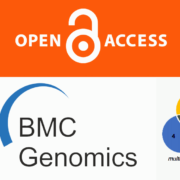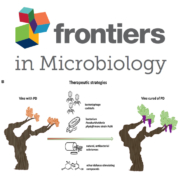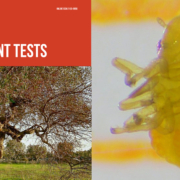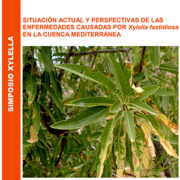Identification of genetic relationships and subspecies signatures in Xylella fastidiosa
Authors
Nicolas Denancé†*, Martial Briand†*, Romain Gaborieau*, Sylvain Gaillard* and Marie-Agnès Jacques*
†Contributed equally
Affiliations
* IRHS, INRA, AGROCAMPUS-Ouest, Université d’Angers, SFR 4207 QUASAV, 42 rue Georges Morel, 49071 Beaucouzé cedex, France
Abstract
Background
The phytopathogenic bacterium Xylella fastidiosa was thought to be restricted to the Americas where it infects and kills numerous hosts. Its detection worldwide has been blooming since 2013 in Europe and Asia. Genetically diverse, this species is divided into six subspecies but genetic traits governing this classification are poorly understood.
Results
SkIf (Specific k-mers Identification) was designed and exploited for comparative genomics on a dataset of 46 X. fastidiosa genomes, including seven newly sequenced individuals. It was helpful to quickly check the synonymy between strains from different collections. SkIf identified specific SNPs within 16S rRNA sequences that can be employed for predicting the distribution of Xylella through data mining. Applied to inter- and intra-subspecies analyses, it identified specific k-mers in genes affiliated to differential gene ontologies. Chemotaxis-related genes more prevalently possess specific k-mers in genomes from subspecies fastidiosa, morus and sandyi taken as a whole group. In the subspecies pauca increased abundance of specific k-mers was found in genes associated with the bacterial cell wall/envelope/plasma membrane. Most often, the k-mer specificity occurred in core genes with non-synonymous SNPs in their sequences in genomes of the other subspecies, suggesting putative impact in the protein functions. The presence of two integrative and conjugative elements (ICEs) was identified, one chromosomic and an entire plasmid in a single strain of X. fastidiosa subsp. pauca. Finally, a revised taxonomy of X. fastidiosa into three major clades defined by the subspecies pauca (clade I), multiplex (clade II) and the combination of fastidiosa, morus and sandyi (clade III) was strongly supported by k-mers specifically associated with these subspecies.
Conclusions
SkIf is a robust and rapid software, freely available, that can be dedicated to the comparison of sequence datasets and is applicable to any field of research. Applied to X. fastidiosa, an emerging pathogen in Europe, it provided an important resource to mine for identifying genetic markers of subspecies to optimize the strategies attempted to limit the pathogen dissemination in novel areas.
The present work has received funding from the European Union’s Horizon 2020 research and innovation programme under Grant Agreements No. 635646 – POnTE “Pest Organisms Threatening Europe”.
Published on March 25, 2019 by BMC GENOMICS









